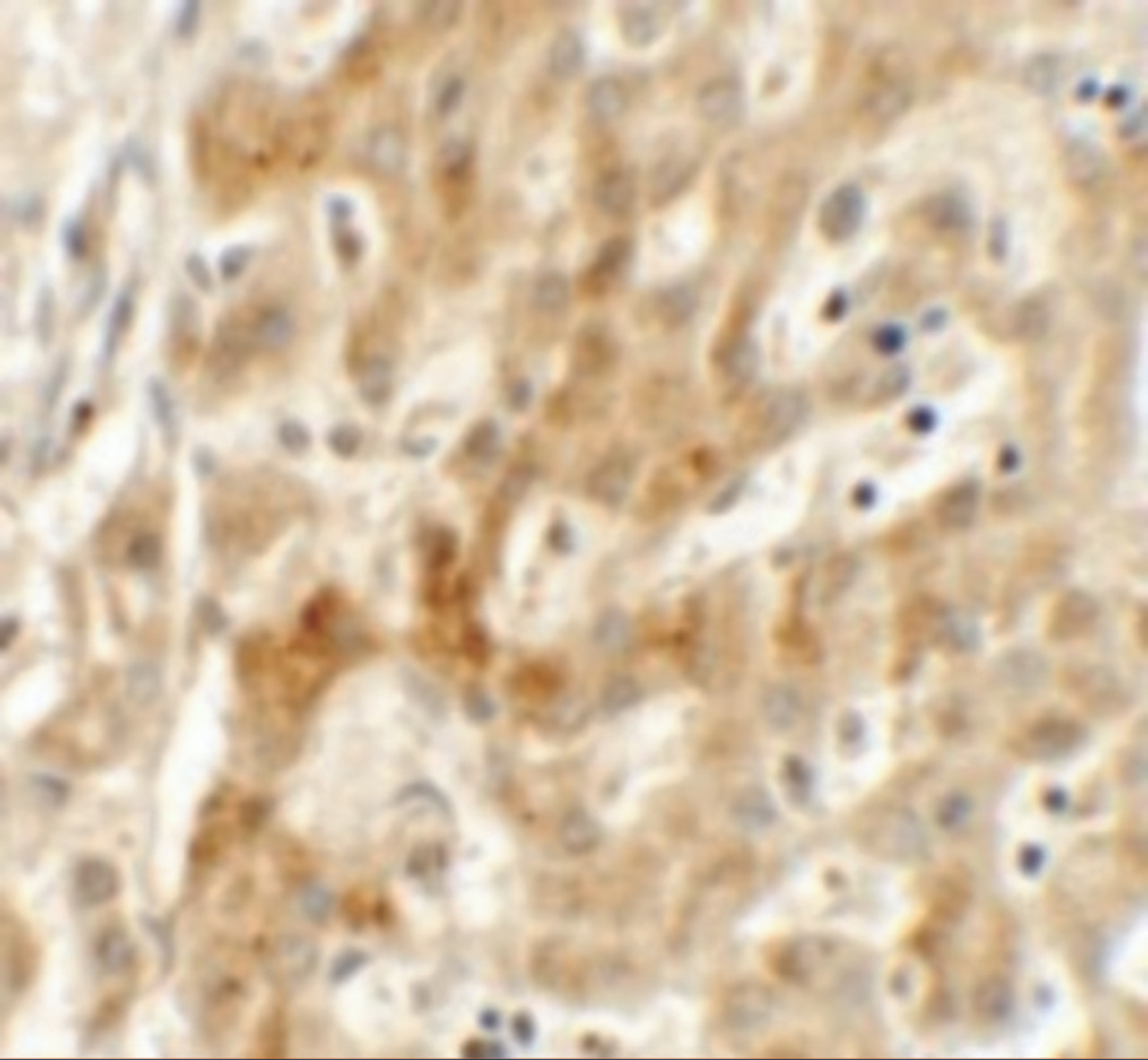Product Description
TMEM106B Antibody | 6783 | ProSci
Host: Rabbit
Reactivity: Human
Homology: Predicted species reactivity based on immunogen sequence: Mouse: (100%) , Bovine: (87%) , Rat: (86%)
Immunogen: TMEM106B antibody was raised against a 15 amino acid synthetic peptide near the amino terminus of human TMEM106B.
The immunogen is located within the first 50 amino acids of TMEM106B.
Research Area: Neuroscience
Tested Application: E, WB, IHC-P, IF
Application: TMEM106B antibody can be used for detection of TMEM106B by Western blot at 1 μg/mL. Antibody can also be used for immunohistochemistry starting at 2.5 μg/mL. For immunofluorescence start at 2.5 μg/mL.
Antibody validated: Western Blot in human samples; Immunohistochemistry in human samples and Immunofluorescence in human samples. All other applications and species not yet tested.
Specificiy: This TMEM106B antibody is predicted to have no cross-reactivity to TMEM106A.
Positive Control 1: Cat. No. 1303 - Human Brain Tissue Lysate
Positive Control 2: Cat. No. 10-201 - Human Liver Tissue Slide
Positive Control 3: N/A
Positive Control 4: N/A
Positive Control 5: N/A
Positive Control 6: N/A
Molecular Weight: Predicted: 30 kDa
Observed: 33 kDa
Validation: N/A
Isoform: N/A
Purification: TMEM106B Antibody is affinity chromatography purified via peptide column.
Clonality: Polyclonal
Clone: N/A
Isotype: IgG
Conjugate: Unconjugated
Physical State: Liquid
Buffer: TMEM106B Antibody is supplied in PBS containing 0.02% sodium azide.
Concentration: 1 mg/mL
Storage Condition: TMEM106B antibody can be stored at 4˚C for three months and -20˚C, stable for up to one year. As with all antibodies care should be taken to avoid repeated freeze thaw cycles. Antibodies should not be exposed to prolonged high temperatures.
Alternate Name: TMEM106B Antibody: Transmembrane protein 106B
User Note: Optimal dilutions for each application to be determined by the researcher.
BACKGROUND: TMEM106B Antibody: Transmembrane protein 106B (TMEM106B) is a single-pass transmembrane protein that is thought to be a novel risk factor for frontotemporal lobar degeneration (FTLD) , a group of clinically, pathologically and genetically heterogeneous disorders associated with atrophy in the frontal lobe and temporal lobe of the brain. The actual role of TMEM106B, and that of the closely related protein TMEM106A are still undetermined.
 Euro
Euro
 USD
USD
 British Pound
British Pound
 NULL
NULL












